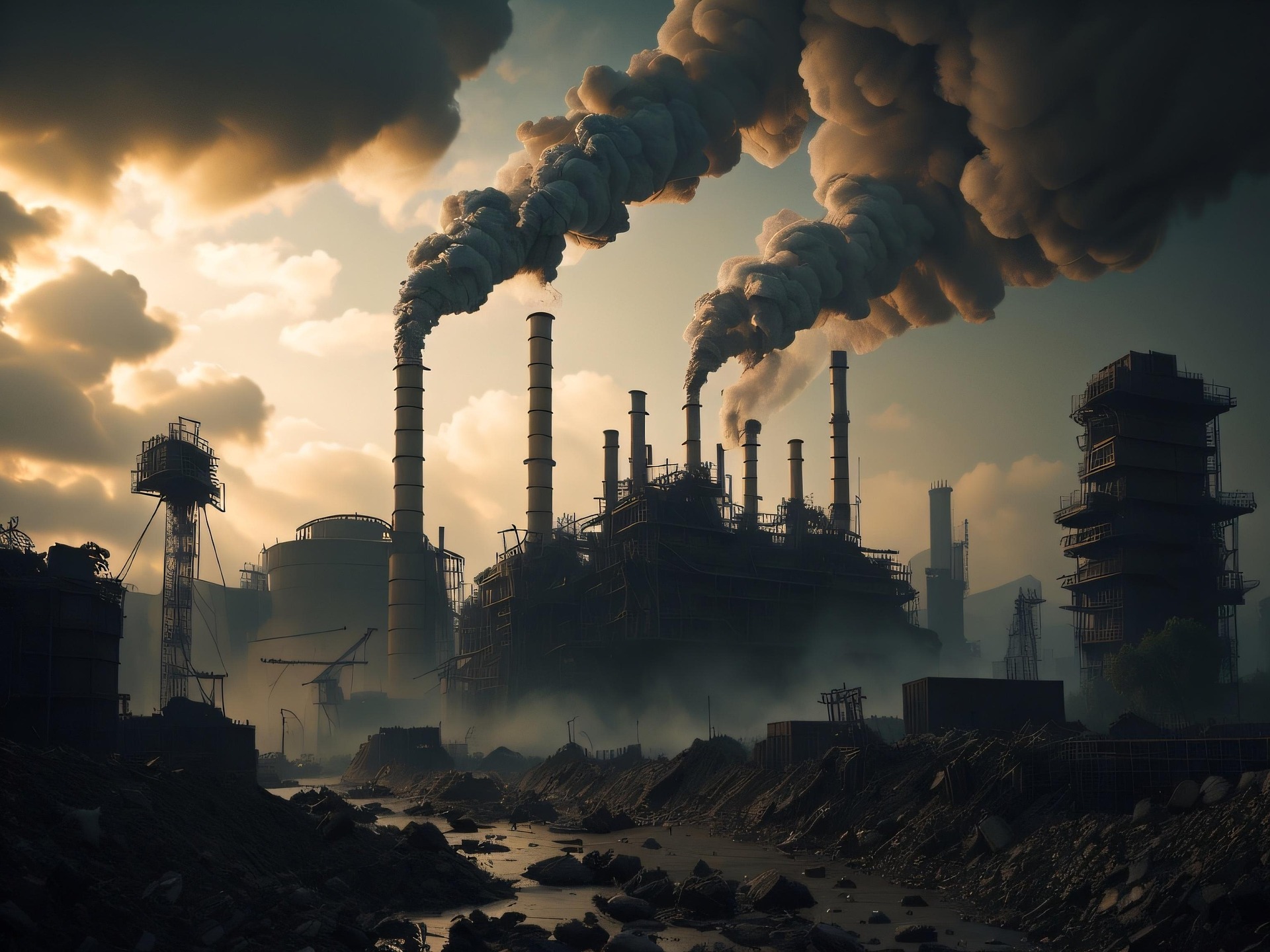Introduction
Air pollution, defined by the presence of harmful substances in the atmosphere, poses a grave threat to human health and the environment. This issue is particularly pronounced in various cities across India, where a notable percentage of harmful chemicals contributes to the deteriorating air quality.
Sources and Categories of Air Pollution
- Particulate Matter (PM): Fine particles from industrial activities, construction, and vehicle emissions contribute substantially to the air pollution percentage in urban areas.
- Combustion Processes: The combustion of fossil fuels in vehicles, industrial facilities, and power plants emit a significant percentage of pollutants like carbon monoxide (CO), nitrogen oxides (NOx), and sulfur dioxide (SO2).
- Ground-level Ozone: Ozone, a critical component of smog, forms in the presence of pollutants from vehicles and industrial sources, constituting a notable percentage of air pollution. The Air Quality Index (AQI)
The Air Quality Index (AQI) serves as a numerical metric to convey the state of air purity in a specific location, providing a straightforward means to communicate the current air quality and associated health risks for the
general population.
AQI Components: - Particulate Matter (PM2.5 and PM10): Microscopic particles suspended in the air, where PM2.5
denotes particles under 2.5 micrometers and PM10 includes particles up to 10 micrometers. - Ground-level Ozone (O3): A fundamental element of smog formed through the interaction of
pollutants from vehicles and industries exposed to sunlight. - Nitrogen Dioxide (NO2): A gas originating from combustion processes, primarily emitted by vehicles
and industrial activities. - Sulfur Dioxide (SO2): A gas produced by burning fossil fuels containing sulfur, typically stemming
from industrial processes. - Carbon Monoxide (CO): A colorless, odorless gas resulting from incomplete combustion of carbon-
containing fuels. - Air Quality Index Categories:
0-50: Satisfactory
51-100: Acceptable
101-150: Concerning for certain groups
151-200: Problematic
201-300: Highly problematic
301 and above: Hazardous
Table showing air pollution levels in selected Indian cities along with corresponding prompts for potential
interventions
S.No. City Air Quality Index (AQI) Prompts for Intervention
- Delhi Very Poor to Severe -Stringent enforcement of vehicular emission
standards.
- Promotion of public transportation and electric
vehicles. - Strict regulations on industrial emissions.
- Implementation of waste-burning bans and waste
management.
- Mumbai Poor to Very Poor -Introduction of green spaces and tree plantation
initiatives.
- Promotion of cleaner industrial practices.
- Strict monitoring of construction activities.
- Kolkata Poor to Very Poor – Encouragement of sustainable urban planning.
- Promotion of cycling and pedestrian-friendly zones.
- Adoption of cleaner technologies in industries.
- Chennai Moderate to Unhealthy – Development of efficient public transportation
systems.
- Stringent enforcement of dust control measures at
construction sites. - Introduction of pollution-eating plants in urban
areas.
- Bengaluru Good to Moderate – Implementation of green building standards.
- Encouragement of eco-friendly commuting options.
- Strict waste management regulations.
- Hyderabad Poor to Very Poor – Introduction of smart traffic management systems.
- Incentives for electric vehicles and charging
infrastructure. - Implementation of stricter waste disposal
regulations.
10 Most Polluted Cities in India in 2023
As per the updated criteria, the mean 24-hour exposure to PM2.5 should not exceed 15µg/m³, reduced from
the previous limit of 25µg/m³. Regarding PM10 particles, classified as standard dust particles, the revised safe
threshold has been decreased from 50 to 45µg/m³.
Cities Air Pollution level
Hassan 242.04 µg/m 3
Bhiwadi 103.08 µg/m 3
Faridabad 87.90 µg/m 3
Gurugram 87.83 µg/m 3
Delhi 84.17 µg/m 3
Kalyan 81.93 µg/m 3
Charkhi Dadri
Bahadurgarh
76.34 µg/m 3
76.30 µg/m 3
Mandi Gobindgarh 74.75 µg/m 3
Kurukshetra 71.07 µg/m 3
Different compounds contributing to air pollution
Table illustrating different compounds that contribute to air pollution along with their approximate percentage
in the atmosphere:
Compound Percentage in Air
Pollution
Common Sources Impact
Carbon Monoxide (CO) 50% (approx.) Vehicle exhaust, industrial
processes, wildfires
Invisible threat: CO,
primarily from vehicle
exhaust silently imperils
air quality and human
health.
Nitrogen Oxides (NOx) 30% (approx.) Vehicle emissions,
industrial combustion
NOx, spawned by
combustion, fuels not just
engines but also
respiratory issues and
environmental
imbalances.
Sulfur Dioxide (SO 2 ) 10% (approx.) Combustion of fossil fuels,
industrial processes
SO 2, emanating from fossil
fuel combustion, weaves
into the air, triggering
respiratory woes and
environmental
acidification.
Particulate Matter (PM) 5% (approx.) Combustion, industrial
activities, construction
Invisible menace: PM,
arising from diverse
sources, infiltrates air,
infiltrates health, and
blankets ecosystems.
Volatile Organic 5% (approx.) Vehicle emissions, VOCs, artistic creators of
Compounds (VOCs) industrial processes smog, emerge from
vehicles and industries,
painting a toxic
masterpiece in the
atmosphere.
Ozone (O 3 ) Varies (contributor to
smog)
Photochemical reactions,
vehicle emissions
O 3 , a dual-faced chemist:
high up, shields; down
below, a key player in
smog, impacting both
health and climate.
Ammonia (NH 3 ) Varies (mainly from
agriculture)
Agricultural activities,
livestock farming
NH 3 , a rural whisper and
urban intruder, drifts from
agriculture, impacting air
quality and ecosystem
balance.
Methane (CH4) Varies (greenhouse gas) Livestock, rice paddies,
fossil fuel extraction
CH 4 , the potent
greenhouse player, seeps
into the air, elevating
temperatures and
contributing to climate
woes.
Hydrogen Sulfide (H 2 S) Varies (industrial
processes)
Oil and gas refining,
industrial emissions
H 2 S, an industrial ghost,
haunts the air, bringing
foul odors and health
concerns to communities
nearby.
Lead (Pb) Varies (phasing out due
to regulations)
Lead-based fuels, industrial
emissions
Pb, a legacy pollutant,
echoes from past fuel use,
leaving its mark on air
quality, health, and the
environment.
Impact on Human Health
Respiratory Issues: The percentage of air pollution chemicals correlates with respiratory diseases such as
asthma, bronchitis, and heightened allergies among the population.
Cardiovascular Problems: Prolonged exposure to the percentage of pollutants in the air is linked to heart
diseases and an elevated risk of mortality.
Cancer Risk: Certain chemicals contributing to the air pollution percentage exhibit carcinogenic properties,
posing a risk to public health.
Impact on the Environment
Ecosystem Damage: The percentage of pollutants, including sulfur dioxide and nitrogen oxides, results in
acid rain, harming aquatic ecosystems and forests.
Climate Change: Greenhouse gas emissions, constituting a percentage of air pollution, contribute to global
warming and climate change.
Biodiversity Loss: Urban areas with high percentages of air pollution can negatively impact plant and
animal species, leading to a reduction in biodiversity.
Present Challenges in Indian Cities
Urbanization: Rapid urban development in cities like Delhi, Mumbai, and Kolkata contributes to a
significant percentage of vehicular emissions and increased industrial activities, exacerbating air quality
concerns.
Industrial Practices: Certain cities, including Kanpur and Lucknow, witness a higher percentage of
pollutants released into the air due to specific industrial practices.
Global Transport Impact: Major port cities such as Chennai and Vishakhapatnam experience the dispersal
of pollutants, contributing to a higher percentage of air pollution on an international scale.
Future Perspective and Prompts
Stringent Regulations: India’s future efforts include reinforcing environmental regulations to govern
emissions from industries and vehicles, thereby reducing the percentage of pollutants in the air.
Green Technologies: Advancements in green technologies, particularly in metropolitan cities like
Bengaluru and Hyderabad, aim to decrease the percentage of air pollution through innovations like
electric vehicles and sustainable industrial practices.
Public Awareness and Prompts: Growing public awareness, prompted by initiatives in cities like Pune and
Ahmedabad may drive individuals and industries to adopt more sustainable practices, thereby
contributing to a reduction in the overall percentage of air pollution.
Conclusion
India faces a pressing need to address the alarming percentage of chemicals contributing to air pollution in its
cities. Collaborative efforts involving stringent regulations, technological innovations, and heightened public
awareness are pivotal for achieving a future characterized by cleaner air and enhanced health across the















